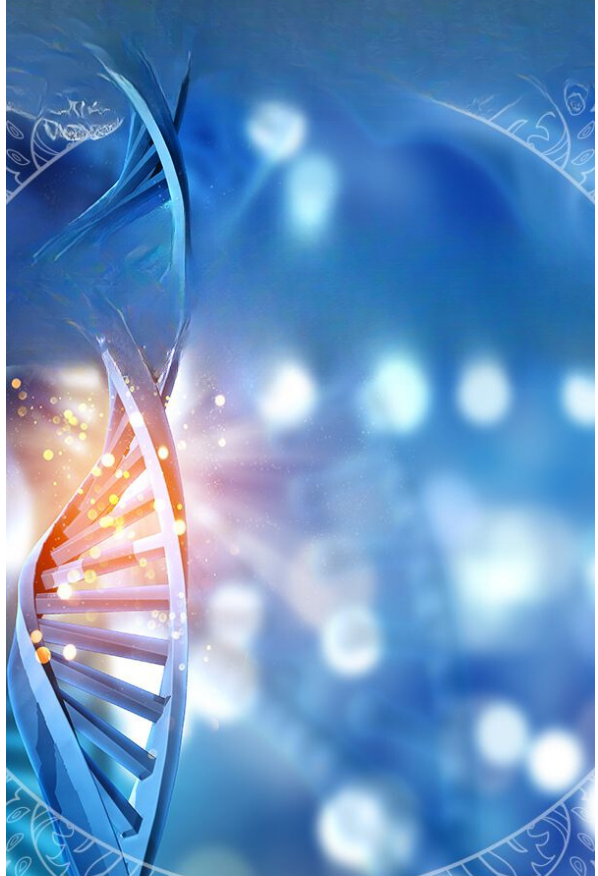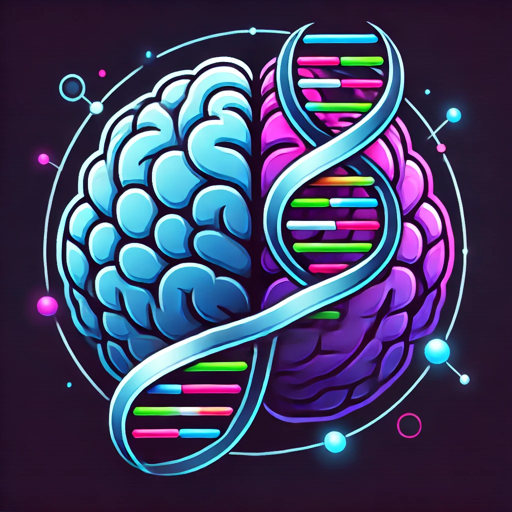
Regen Factor: Pioneering the Future of Healing and Longevity
Regen Factor: Pioneering the Future of Healing and Longevity Foreword By Stephen Blignaut, CEO of Regen Factor 5 September 2024 Welcome to a new era


Growth factors are naturally occurring proteins capable of stimulating cellular growth, proliferation, healing, and cellular differentiation. These proteins play a crucial role in regulating a variety of cellular processes and are particularly important in the body’s response to injury and disease. Below, we delve into 23 key growth factors, their functions, and how they contribute to health and healing.
1. Epidermal Growth Factor (EGF)
• Discovered: 1962
• Function: EGF stimulates cell growth, proliferation, and differentiation by binding to its receptor, EGFR. It plays a vital role in skin regeneration and wound healing.
• Layman’s Explanation: EGF helps your skin heal faster by encouraging skin cells to grow and divide.
2. Fibroblast Growth Factor 1 (FGF1) and Fibroblast Growth Factor 2 (FGF2)
• Discovered: 1974 (FGF1) and 1975 (FGF2)
• Function: These factors promote wound healing, angiogenesis (the formation of new blood vessels), and tissue repair. FGF2, in particular, is heavily researched for its role in various tissues, including skin, blood vessels, and the nervous system.
• Layman’s Explanation: FGF1 and FGF2 help your body create new blood vessels and heal wounds, making them crucial for many body functions.
3. Transforming Growth Factor Beta (TGF-β)
• Discovered: 1983
• Function: TGF-β regulates immune function, cell growth, and tissue repair. It plays a significant role in wound healing and scar formation.
• Layman’s Explanation: TGF-β helps control inflammation and ensures your wounds heal properly without too much scarring.
4. Vascular Endothelial Growth Factor (VEGF)
• Discovered: 1989
• Function: VEGF promotes the growth of new blood vessels, which is essential for supplying oxygen to tissues, especially during wound healing and cancer growth.
• Layman’s Explanation: VEGF acts like a construction worker that builds new blood vessels to bring oxygen and nutrients to injured or growing tissues.
5. Platelet-Derived Growth Factor (PDGF)
• Discovered: 1974
• Function: PDGF aids in wound healing by attracting cells that repair tissues and stimulating the formation of new blood vessels.
• Layman’s Explanation: PDGF calls in the repair crew to fix injured areas by creating new tissues and blood vessels.
6. Insulin-Like Growth Factor 1 (IGF-1)
• Discovered: 1957
• Function: IGF-1 promotes growth during childhood and continues to have anabolic effects in adults, being important for muscle and bone growth.
• Layman’s Explanation: IGF-1 is like a growth booster that helps kids grow taller and keeps muscles and bones strong in adults.
7. Hepatocyte Growth Factor (HGF)
• Discovered: 1990
• Function: HGF stimulates liver regeneration and promotes cell growth, movement, and survival in various tissues.
• Layman’s Explanation: HGF helps your liver heal itself and keeps other cells growing and healthy.
8. Nerve Growth Factor (NGF)
• Discovered: 1950s
• Function: NGF supports the survival and growth of neurons, crucial for nervous system development and repair.
• Layman’s Explanation: NGF is like a gardener for your nervous system, helping nerve cells grow and stay healthy.
9. Brain-Derived Neurotrophic Factor (BDNF)
• Discovered: 1982
• Function: BDNF supports the survival of existing neurons and encourages the growth of new neurons and synapses, which is important for brain plasticity.
• Layman’s Explanation: BDNF keeps your brain flexible and sharp by helping brain cells grow and form new connections.
10. Keratinocyte Growth Factor (KGF)
• Discovered: 1989
• Function: KGF stimulates the growth of epithelial cells, which line the surfaces of the body, such as skin and the lining of the lungs.
• Layman’s Explanation: KGF helps your skin and the lining of your lungs regenerate quickly.
11. Granulocyte-Colony Stimulating Factor (G-CSF)
• Discovered: 1983
• Function: G-CSF promotes the production of white blood cells, which are essential for fighting infection.
• Layman’s Explanation: G-CSF boosts your immune system by making more white blood cells to fight off infections.
12. Granulocyte-Macrophage Colony-Stimulating Factor (GM-CSF)
• Discovered: 1983
• Function: GM-CSF stimulates the production of white blood cells and supports their function in fighting infection.
• Layman’s Explanation: GM-CSF is like a trainer for your immune system, helping it build more infection-fighting cells.
13. Interleukin-2 (IL-2)
• Discovered: 1976
• Function: IL-2 regulates the activities of white blood cells (leukocytes), which are responsible for immunity.
• Layman’s Explanation: IL-2 helps direct your immune system’s defenses, ensuring it attacks invaders like viruses and bacteria.
14. Bone Morphogenetic Proteins (BMPs)
• Discovered: 1965
• Function: BMPs induce the formation of bone and cartilage and are used in orthopedic surgery to promote bone healing.
• Layman’s Explanation: BMPs help your body repair broken bones and grow new cartilage.
15. Erythropoietin (EPO)
• Discovered: 1906
• Function: EPO stimulates the production of red blood cells, which are essential for carrying oxygen throughout the body.
• Layman’s Explanation: EPO boosts the production of red blood cells, ensuring your muscles and organs get the oxygen they need.
16. Stem Cell Factor (SCF)
• Discovered: 1988
• Function: SCF stimulates the growth of stem cells and their differentiation into various types of blood cells.
• Layman’s Explanation: SCF helps create the building blocks for different blood cells, ensuring your blood can carry out all its jobs.
17. Transforming Growth Factor Alpha (TGF-α)
• Discovered: 1981
• Function: TGF-α promotes cell proliferation and differentiation, similar to EGF but with a more specialized role in epithelial cells.
• Layman’s Explanation: TGF-α is like a specific version of EGF, helping skin cells and other lining cells grow and repair.
18. Heparin-Binding EGF-Like Growth Factor (HB-EGF)
• Discovered: 1990s
• Function: HB-EGF stimulates cell growth, particularly in the heart, skin, and the gastrointestinal tract.
• Layman’s Explanation: HB-EGF helps tissues in the heart, skin, and gut heal and grow faster.
19. Neuregulin (NRG1)
• Discovered: 1992
• Function: NRG1 plays a key role in the development of the heart and nervous system and supports neuron survival.
• Layman’s Explanation: NRG1 is essential for heart and brain development, ensuring they grow properly and stay healthy.
20. Angiopoietin (Ang-1 and Ang-2)
• Discovered: 1996
• Function: Angiopoietins regulate the development of new blood vessels and maintain the stability of blood vessel networks.
• Layman’s Explanation: Angiopoietins help build and maintain your blood vessels, ensuring your body gets the blood flow it needs.
21. Glial Cell-Derived Neurotrophic Factor (GDNF)
• Discovered: 1993
• Function: GDNF supports the survival of neurons, especially in the central nervous system.
• Layman’s Explanation: GDNF is like a shield for your nerve cells, keeping them alive and functioning well.
22. Leukemia Inhibitory Factor (LIF)
• Discovered: 1988
• Function: LIF inhibits differentiation in stem cells and supports their survival. It is also involved in immune responses.
• Layman’s Explanation: LIF helps keep stem cells in their flexible state, ready to turn into any type of cell your body needs.
23. Fibroblast Growth Factor 19 (FGF19)
• Discovered: 1999
• Function: FGF19 regulates bile acid synthesis and has metabolic effects, including glucose and lipid metabolism.
• Layman’s Explanation: FGF19 helps manage how your body breaks down fats and sugars, playing a role in metabolism.
Timeline of Discovery
• 1906: Erythropoietin (EPO) discovered.
• 1950s: Nerve Growth Factor (NGF) discovered.
• 1957: Insulin-Like Growth Factor 1 (IGF-1) discovered.
• 1962: Epidermal Growth Factor (EGF) discovered.
• 1965: Bone Morphogenetic Proteins (BMPs) discovered.
• 1974: Platelet-Derived Growth Factor (PDGF) and Fibroblast Growth Factor 1 (FGF1) discovered.
• 1975: Fibroblast Growth Factor 2 (FGF2) discovered.
• 1976: Interleukin-2 (IL-2) discovered.
• 1981: Transforming Growth Factor Alpha (TGF-α) discovered.
• 1982: Brain-Derived Neurotrophic Factor (BDNF) discovered.
• 1983: Granulocyte-Colony Stimulating Factor (G-CSF), Granulocyte-Macrophage Colony-Stimulating Factor (GM-CSF), and Transforming Growth Factor Beta (TGF-β) discovered.
• 1988: Stem Cell Factor (SCF) and Leukemia Inhibitory Factor (LIF) discovered.
• 1989: Vascular Endothelial Growth Factor (VEGF) and Keratinocyte Growth Factor (KGF) discovered.
• 1990: Hepatocyte Growth Factor (HGF) and Heparin-Binding EGF-Like Growth Factor (HB-EGF) discovered.
• 1992: Neuregulin (NRG1) discovered.
• 1993: Glial Cell-Derived Neurotrophic Factor (GDNF) discovered.
• 1996: Angiopoietins (Ang-1 and Ang-2) discovered.
• 1999: Fibroblast Growth Factor 19 (FGF19) discovered.
Why is FGF2 the Most Commonly Researched?
FGF2 is the most researched growth factor due to its broad range of biological activities. It plays a crucial role in angiogenesis, wound healing, and tissue repair, making it highly valuable in both medical and cosmetic applications. Its ability to stimulate the growth of various tissues, including skin, blood vessels, and neurons, makes it a prime candidate for therapies aimed at regeneration and repair.
• Layman’s Explanation: FGF2 is like a super helper in the body. It works in many areas, from healing wounds to helping nerves and skin grow. Because it’s so versatile and powerful, scientists study it a lot to find new ways to use it in treatments.
Comparing bFGF (FGF2) with Other FGFs
What Can bFGF Do?
• Helps Grow New Blood Vessels: Similar to FGF1, FGF4, FGF6.
o Explanation: bFGF is excellent at helping the body create new blood vessels, crucial for healing wounds and repairing tissues.
• Speeds Up Wound Healing: Similar to FGF1, FGF7, FGF10, FGF18.
o Explanation: bFGF helps skin and other tissues heal faster by encouraging cells to grow and produce collagen, a key component of skin.
• Supports Brain and Nerve Health: Similar to FGF1, FGF9, FGF20.
o Explanation: bFGF helps protect nerve cells and encourages them to grow and repair, essential for brain health.
• Aids in Bone and Cartilage Repair: Similar to FGF2, FGF9, FGF18.
o Explanation: bFGF plays a role in helping bones and cartilage heal, making it useful in treatments for bone injuries.
• Encourages Cell Growth and Development: Similar to FGF1, FGF4, FGF8.
o Explanation: bFGF helps cells grow and develop properly, crucial for the body’s maintenance and development.
• Supports Stem Cells: Similar to FGF4.
o Explanation: bFGF helps keep stem cells in a flexible state, allowing them to turn into different types of cells as needed.
What Can’t bFGF Do as Well?
• Managing Metabolism: Specialty of FGF19, FGF21, FGF23.
o Explanation: bFGF isn’t as involved in controlling how the body handles sugars, fats, and other metabolic processes.
• Guiding Development: Specialty of FGF8, FGF17.
o Explanation: While bFGF is important for development, other FGFs are more specifically focused on guiding the development of things like limbs and the brain.
• Helping the Reproductive System Develop: Specialty of FGF8, FGF9.
o Explanation: bFGF doesn’t play a big role in developing the reproductive system, which is something that other FGFs are more specialized in.
Summary: bFGF (FGF2) is a versatile tool in the body that can help with many processes, such as healing wounds, growing new blood vessels, and supporting brain and nerve health. While it shares many functions with other FGFs, it is not a complete substitute for all the specialized tasks that other FGFs perform.
Copyright: Regen Factor 2024

Regen Factor: Pioneering the Future of Healing and Longevity Foreword By Stephen Blignaut, CEO of Regen Factor 5 September 2024 Welcome to a new era

The Powerful Healing Capabilities of Bioidentical FGFs and Their Potential to Increase Lifespan: A Comprehensive Overview Bioidentical Fibroblast Growth Factors (FGFs) represent a groundbreaking advancement

5 September 2024 Regen Factor: A Revolutionary Opportunity in Regenerative Medicine Introduction Dear Prospective Investor/Investor, Imagine a world where healing from a debilitating injury is

The most impactful and potentially popular bioidentical FGF’s Here’s a focused selection of the most impactful and potentially popular bioidentical FGFs, highlighting their powerful healing

White Paper Outline: The Distinction Between Non-Bioidentical and Bioidentical rh bFGF and the Pioneering Role of Regen Factor Introduction Overview of Fibroblast Growth Factors (FGFs)
